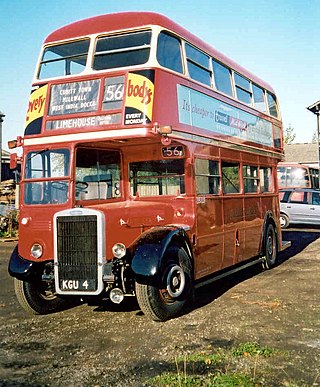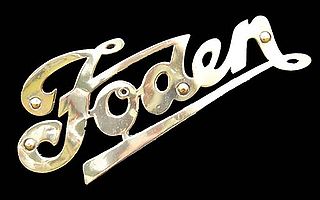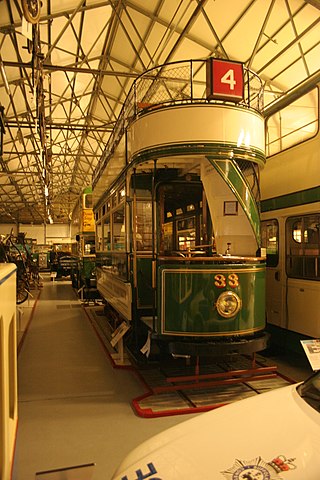

The Scammell Scarab is a British 3-wheeled tractor unit produced by the truck manufacturer Scammell between 1948 and 1967. These vehicles are often known as "Snub-nose Trucks" or "Snub-nose Lorries" because of the round hood in front of the cab.


The Scammell Scarab is a British 3-wheeled tractor unit produced by the truck manufacturer Scammell between 1948 and 1967. These vehicles are often known as "Snub-nose Trucks" or "Snub-nose Lorries" because of the round hood in front of the cab.


The Scammell Scarab was the successor to the Scammell Mechanical Horse and production began in 1948. [1] Its name is commonly believed to be derived from the rounded bonnet that resembled the elytra (wing covers) of a Scarab beetle, but the name really comes from a more conventional source. It was a portmanteau of Scammell and the Arab horse which the Mechanical Horse replaced in British Railways usage. The official Scammell Lorries advertisement film makes reference to this. It was extremely popular with British Railways and other companies which made deliveries within built-up areas. The Ministry of Defence also used the Scarab and trailers for predominantly internal transport on large military bases.
In the late 1920s, railway companies were looking for a suitable vehicle to use on their town parcels delivery traffic, which was predominantly horse-drawn. The London Midland & Scottish Railway experimented with various ideas and in late 1930 announced, jointly with Karrier Motors, a tractor unit for this purpose. The vehicle, the Karrier Cob, was powered by a twin-cylinder Jowett engine and utilised a mechanism to couple existing horse trailers to the tractor units. Meanwhile the London & North Eastern Railway had approached Napier, the quality car and aero-engine makers, for an answer to the same problem. They came up with some ideas, but did not wish to develop the concept and sold the project to Scammell Lorries of Watford. Their designer, O. D. North, refined and further developed the concept of the three-wheel tractor unit which automatically coupled and un-coupled trailers and in 1934 announced the introduction of the Mechanical Horse.
The Scammell Mechanical Horse, with its very 'square' wooden cab and steel chassis, remained largely unchanged until the late 1940s when the tractor section was redesigned, creating the Scammell Scarab, which featured the same successful automatic coupling from the original but now used the Scammell 2,090 cc side-valve engine in both the three- and six-ton versions. A diesel version was also introduced with a Perkins engine. The Scarab's cab was more rounded and made from steel including roof and windscreen panels pressed from steel tools obtained from Bedford that made up the roof of the 'O' type lorry. [2] With the engine being mounted lower and more centrally than in the Mechanical Horse, the Scarab was much more stable. The railways for which this style of vehicle was originally designed continued to be a primary customer, although there were many other users, the manoeuvrability proving popular for companies operating in city environments.
Production of the Scarab ceased in 1967 and it was replaced with the Scammell Townsman that now featured a fibreglass cab. Like that fitted to the Trunker, Handyman and Routeman, it was designed by Giovanni Michelotti. The Townsman utilised many developments in large vehicles including vacuum-assisted hydraulic brakes and although the same automatic coupling feature was used, this now used a vacuum-operated release mechanism rather than the hand lever found in earlier models. Despite numerous improvements, the Townsman was mainly sold to British Rail and the Royal Mail and production ended in 1968 as forthcoming construction and use regulations mandating dual-line brakes on articulated combinations could not be met. Formation of British Leyland also affected to ending of Scammell Townsman production.[ citation needed ]
The Scammell or "FAR" was also made under licence by the French company Chenard-Walcker and used the Citroën Traction Avant engine. Production of this version began in 1937; it was known in France as the Pony Mécanique. This continued in production, in various versions, until 1970.
A four-wheel version of the Scarab was produced, named "Scarab Four". It was based on the Standard Atlas van chassis, later called the Leyland 20. This chassis was not well-adapted to the job and it was not a great success. The braking performance was much better than the three-wheel version but the independent front suspension gave a bouncy ride. Only a handful were sold in Britain but 60 were exported to South Africa and Macau. [3] There are no known surviving examples of the Scarab Four in the UK.

Scammell Lorries produced approximately 30,000 Mechanical Horses of all types; of these, about 30 original Mechanical Horses, 60 Scarabs, and 30 Townsman are known to survive together with three Karrier Cobs and two Jen Tugs. [4] Examples may be seen at a number of museums and heritage railways. The Mechanical Horse Club (MHC) was established in 1983 to promote the preservation of Scammell three-wheelers. The MHC regularly have a display stand and several examples of the preserved vehicles within the commercial vehicles section at the annual Great Dorset Steam Fair.
The restoration of a Scarab to working order was the subject of a programme in the third series of Salvage Squad. [5] The final filming session took place at the Vintage Carriage Trust at Ingrow station, on the Keighley & Worth Valley Railway in West Yorkshire, on 22 November 2003, [6] where it was handed back to its owner, Chris Waye, out-shopped in the standard British Railways road vehicle livery of carmine and cream, colloquially referred to as blood and custard.
Madge, a character from Thomas & Friends , is based on this vehicle. [7]
Related developments:
An inventor of vans:

Leyland Motors Limited was a British vehicle manufacturer of lorries, buses and trolleybuses. The company diversified into car manufacturing with its acquisitions of Triumph and Rover in 1960 and 1967, respectively. It gave its name to the British Leyland Motor Corporation, formed when it merged with British Motor Holdings in 1968, to become British Leyland after being nationalised. British Leyland later changed its name to simply BL, then in 1986 to Rover Group.

Commer was a British manufacturer of commercial and military vehicles from 1905 until 1979. Commer vehicles included car-derived vans, light vans, medium to heavy commercial trucks, and buses. The company also designed and built some of its own diesel engines for its heavy commercial vehicles.

Associated Equipment Company (AEC) was a British vehicle manufacturer that built buses, motorcoaches and trucks from 1912 until 1979. The name Associated Equipment Company was hardly ever used; instead it traded under the AEC and ACLO brands.

Thornycroft was an English vehicle manufacturer which built coaches, buses, and trucks from 1896 until 1977.
Scammell Lorries Limited was a British manufacturer of trucks, particularly specialist and military off-highway vehicles, between 1921 and 1988.

The Leyland Titan was a forward-control chassis with a front-mounted engine designed to carry double-decker bus bodywork. It was built mainly for the United Kingdom market between 1927 and 1942, and between 1945 and 1969.

Foden Trucks was a British truck and bus manufacturing company, which had its origins in Elworth near Sandbach in 1856. Paccar acquired the company in 1980, and ceased to use the marque name in 2006.
Bedford Vehicles, usually shortened to just Bedford, was a brand of vehicle manufactured by Vauxhall Motors, then a subsidiary of multinational corporation General Motors. Established in April 1931, Bedford Vehicles was set up to build commercial vehicles. The company was a leading international lorry brand, with substantial export sales of light, medium, and heavy lorries throughout the world.

Guy Motors was a Wolverhampton-based vehicle manufacturer that produced cars, lorries, buses and trolleybuses. The company was founded by Sydney S. Guy (1885–1971) who was born in Kings Heath, Birmingham. Guy Motors operated out of its Fallings Park factory from 1914 to 1982, playing an important role in the development of the British motor industry.

An artillery tractor, also referred to as a gun tractor, is a specialized heavy-duty form of tractor unit used to tow artillery pieces of varying weights and calibres. It may be wheeled, tracked, or half-tracked.

Karrier was a British marque of motorised municipal appliances and light commercial vehicles and trolley buses manufactured at Karrier Works, Huddersfield, West Yorkshire, by Clayton and Co., Huddersfield, Limited. They began making Karrier motor vehicles in 1908 in Queen Street South, Huddersfield. In 1920, H.F. Clayton sold Clayton and Co's Huddersfield business into public listed company Karrier Motors while keeping their Penistone operation separate. Mechanical and electrical engineers Clayton & Co Penistone, remain active in 2020 as Clayton Penistone Group.

The Mercedes-Benz Actros is a heavy-duty truck introduced by Mercedes-Benz at the 1996 Commercial Vehicle IAA in Hanover, Germany as the replacement for the SK. It is normally used for long-distance haulage, heavy duty distribution haulage and construction haulage. It is available in weights starting at 18 tonnes and is powered by an inline-6 diesel engine with turbocharger and intercooler. Daimler Trucks/Lorries launched the version II of the Actros in 2002, and the version III in 2007. The fourth generation of the Actros, named officially "the New Actros", launched in July 2011

A semi-trailer is a trailer without a front axle. In the United States, the term is also used to refer to the combination of a truck and a semi-trailer; a tractor-trailer.

FAR was a French truck manufacturer, affiliated with Chenard-Walcker.

The Ipswich Transport Museum is a museum in Ipswich, Suffolk, England, devoted principally to the history of transport and engineering objects made or used in its local area.

A ballast tractor is a specially weighted tractor unit of a heavy hauler combination. It is designed to utilize a drawbar to pull or push heavy or exceptionally large trailer loads which are loaded in a hydraulic modular trailer. When feasible, lowboy-style semi-trailers are used to minimize a load's center of gravity. Typical drivetrains are 6×4 and 6×6 but also available in 8×6 and 8×8. Typical ballast tractor loads include oil rig modules, bridge sections, buildings, ship sections, and industrial machinery such as generators and turbines.

A steam wagon is a steam-powered truck for carrying freight. It was the earliest form of lorry (truck) and came in two basic forms: overtype and undertype, the distinction being the position of the engine relative to the boiler. Manufacturers tended to concentrate on one form or the other.

The concept of the Mechanical Horse tractor unit with an easily detached articulated trailer was conceived in the early 1930s by Napier & Son. It has one front wheel in the midline. The London and North Eastern Railway had approached Napier for an answer to the problem of replacing horses for local haulage purposes, while retaining the flexibility of changing the wagons and the maneuverability of the horse and wagon. These vehicles are often known as "Snub-nose Trucks" or "Snub-nose Lorries" because of the round hood in front of the cab.

The Bedford OY is an army lorry (truck) built by Bedford for the British Armed Forces and introduced in 1939. It was based on Bedford's O-series commercial vehicles with a modified front end and single rear tyres. It was designed for a 3-ton payload. The OYD was a general service vehicle, while the OYC was a tanker version for carrying water or petrol. These vehicles were widely used during, and after, World War II but were later superseded by the Bedford RL.

The Leyland Landtrain was a truck that was produced in the 1980s by British Leyland. Designed for the export markets in Africa, Asia, Latin America and the Middle East, it was particularly popular in Nigeria, Kenya and Zimbabwe. The Landtrain was designed to be used in areas of limited infrastructure, where roads may be rough and fuel scarce. It was powered by four different engines and produced with three different gross vehicle weights (GVW), 19 tonnes, 30 t and 36 t
(Some used as references)